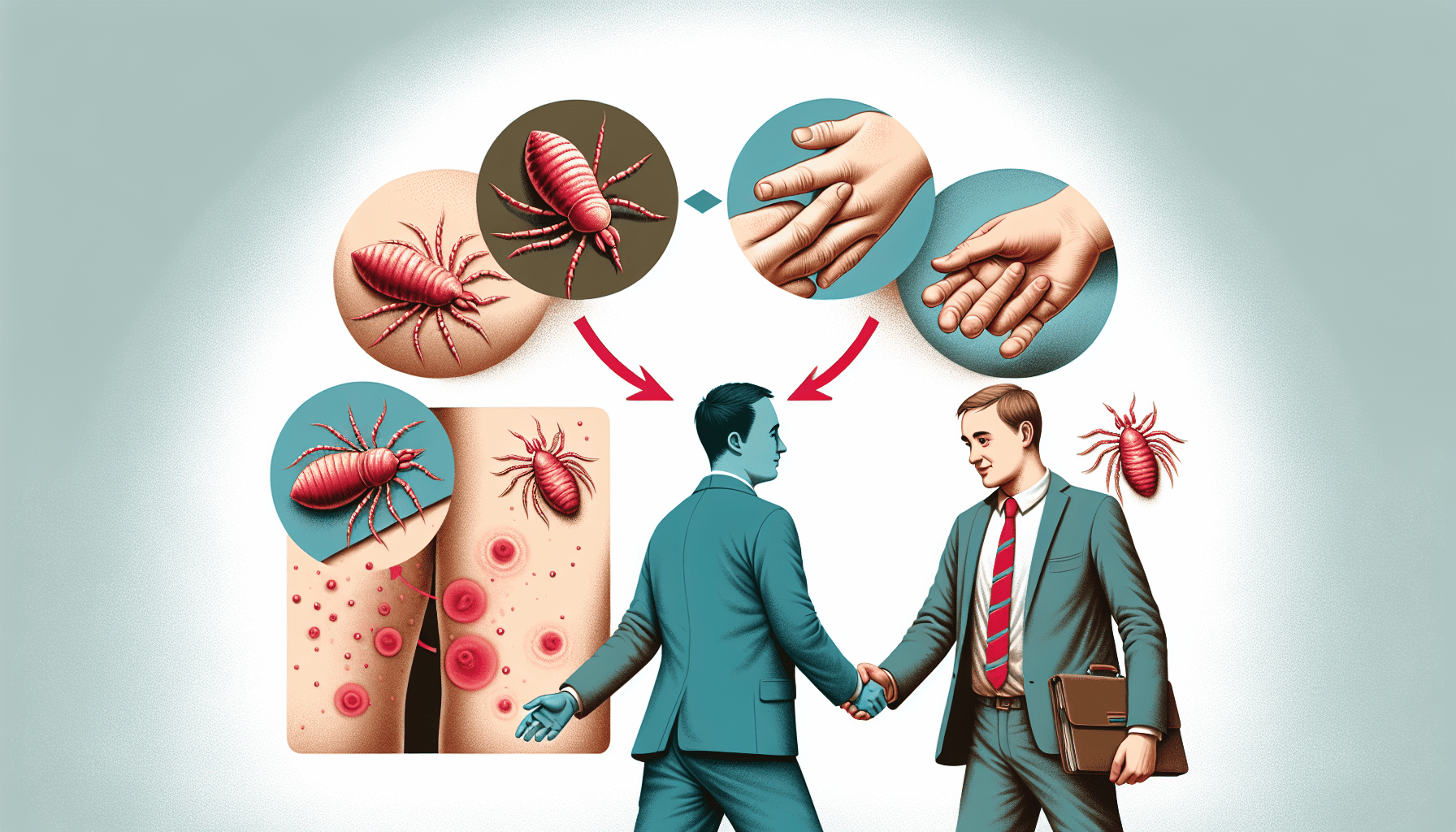Have you ever wondered what triggers the onset of scabies? Scabies is a highly contagious skin infection caused by tiny mites that burrow into the skin’s outer layers. These microscopic mites, known as Sarcoptes scabiei, can easily spread from person to person through close physical contact. Once the mites find a new host, they lay eggs and multiply rapidly, leading to intense itching and discomfort. In this article, we will explore the various factors that can contribute to the initial development of scabies, shedding light on how this pesky condition finds its way into our lives.
Introduction
Welcome to this article about what causes scabies to begin with! If you’re here, chances are you’re looking for answers about this uncomfortable skin condition. Well, you’re in the right place! In this comprehensive article, we will explore the causes of scabies, how it is transmitted, and the risk factors associated with scabies infection. So, let’s dive in and learn more about this common parasitic infestation!
Understanding Scabies
Before we delve into the causes of scabies infestation, it’s important to have a clear understanding of what scabies actually is. Scabies is a highly contagious skin condition caused by a microscopic mite called Sarcoptes scabiei. These tiny mites burrow into the upper layers of the skin, causing intense itching and a characteristic rash. Scabies is usually spread through direct skin-to-skin contact or by sharing personal items with an infected individual.
Causes of Scabies Infestation
Scabies infestation occurs when the Sarcoptes scabiei mite finds its way onto the skin and burrows into the upper layers. But how does this happen in the first place? There are several factors that contribute to the development of scabies:
Transmission of Scabies
Scabies is primarily transmitted through direct skin-to-skin contact with an infected person. This can occur during activities such as hugging, holding hands, or even sexual contact. The mites can easily transfer from one person to another, especially in close, prolonged contact.
Risk Factors for Scabies Infection
Certain risk factors increase the likelihood of scabies infection. These include:
Poor Hygiene
Poor personal hygiene can provide an environment for scabies mites to thrive. Infrequent bathing or inadequate cleanliness may increase the chances of infestation.
Crowded Living Conditions
Living in overcrowded or cramped spaces can expedite the spread of scabies. Close proximity to others increases the risk of direct contact and allows mites to spread easily among individuals.
Institutional Settings
Institutions such as nursing homes, hospitals, and prisons can be hotspots for scabies outbreaks. The close living quarters and shared facilities in these settings facilitate mite transmission.
Direct Skin-to-Skin Contact
As mentioned earlier, scabies is primarily spread through direct skin-to-skin contact. Close contact with an infected individual, whether through a handshake or a hug, can easily transfer the mites.
Sexual Contact
Sexual contact, particularly intimate activities, can transmit scabies. The mites can easily move from one person to another during these encounters.
Sharing Personal Items
Sharing personal items like clothing, bedding, towels, or even furniture can contribute to scabies transmission. The mites can survive on these items for a short period, allowing them to easily move between individuals.
Prolonged Close Contact
Prolonged close contact, such as sharing a bed or living in close quarters with an infected person, increases the likelihood of scabies transmission. Spending extended periods in proximity to an infected individual gives the mites ample opportunity to transfer.
Mite Survival Outside the Human Body
Although Sarcoptes scabiei mites prefer the human body, they can survive for a short time away from their host. This means that objects such as bedding or furniture that have come into contact with an infected person can still harbor mites and potentially cause infestation.
Symptoms and Diagnosis of Scabies
Now that we understand the causes and risk factors of scabies, it’s important to recognize the symptoms and understand how the condition is diagnosed. The common symptoms of scabies include intense itching, especially at night, a rash with small red bumps or blisters, and the presence of thin, irregular burrow tracks on the skin. If you suspect you may have scabies, it is crucial to consult a healthcare professional for an accurate diagnosis. They may perform a physical examination, skin scraping, or use other diagnostic methods to confirm the presence of scabies.
Conclusion
In conclusion, scabies is caused by the Sarcoptes scabiei mite, which burrows into the upper layers of the skin, leading to intense itching and a characteristic rash. The condition is primarily transmitted through direct skin-to-skin contact and can be facilitated by risk factors such as poor hygiene, crowded living conditions, and sharing personal items. Recognizing the symptoms and seeking prompt medical attention is crucial to effectively manage and treat scabies. Remember, if you suspect you have scabies, consult a healthcare professional for guidance and proper diagnosis. Stay informed and take necessary precautions to prevent the spread of scabies!
